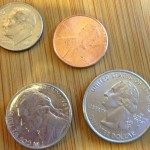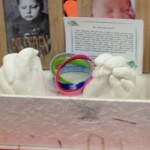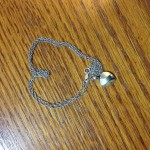Death: It’s a Human Condition
 Last night, I kept a tradition and sang, “Happy Birthday,” to an empty chair that should contain my would-be 7-year-old son. Following an emotional night, I subsequently attended the funeral of my son’s friend, a brave 7-year-old boy also taken too soon. Death and the reminder of mortality surrounded me as I prepared this blog post.
Last night, I kept a tradition and sang, “Happy Birthday,” to an empty chair that should contain my would-be 7-year-old son. Following an emotional night, I subsequently attended the funeral of my son’s friend, a brave 7-year-old boy also taken too soon. Death and the reminder of mortality surrounded me as I prepared this blog post.
Everlasting Molds

Abraham Lincoln, Benjamin Franklin, Thomas Jefferson, Franklin D. Roosevelt, and even Beethoven from Luke A. Fidler’s essay, “Impressions From the Face of a Corpse,” have something in common: immortality. Although U.S. coins featuring dead presidents are not of human bone or flesh worthy for cabinets of curiosity, they could be collected if deemed rare. Additionally, Americans almost daily handle these inanimate objects, depicting the face of the deceased in the palm of their hands and exchange them freely, without a given thought.
Death masks, however, are vastly different than that of embedded faces on metal because they are “impressions from the face of a corpse.” There are many myths mentioned in Fidler’s essay behind this popular ritual of the dead, dating back to Alexander the Great, “thanks to the assumption that it was a portrait par excellence.”
 Comparable to the three-dimensional molds taken of the face of a corpse, many bereaved parents cast their dead child’s hands or feet immediately proceeding death.
Comparable to the three-dimensional molds taken of the face of a corpse, many bereaved parents cast their dead child’s hands or feet immediately proceeding death.
“Do This In Remembrance Of Me”
The rituals I created to remember my spunky son are all done to help me cope; thus rituals and traditions are established by the living as a way to grieve our survival. Objects left behind by loved ones are cherished and to evoke memories not to be forgotten. Similar to Belk’s claim, “people seek to assure that their selves will extend beyond their deaths,” I seek to keep my son’s “self” alive through photographs, traditions, toys he left behind, his sister, myself, and, of course, the foundation established in his name.
Something neglected to be mentioned in Fidler’s essays is the belief that death masks were made as an object of reflection to remember a lost loved one. In contrast, when Christians manifested, they considered a corpse to be impure and therefore, rituals for the deceased did not occur until after the growth of the religion. The prominent ritual of Christians is that of Holy Communion (Also known as The Eucharist or transubstantiation) whereby the Body and Blood of Jesus Christ is symbolically ingested.
“Eat His Death”
As you’re waiting for this food, you may hear a voice saying, “Don’t look now, but you’re in this thing pretty deep. You could end up as a corpse, as dead as Jesus.”
Hence, this is where the controversy lies among many and question if the elements of bread and wine indeed “miraculously change” to the Body and Blood of Christ. Through transubstantiation, a supernatural form of Endocannibalism, Christ lives forever.
In comparison of the Christian’s ritual, eating death is taken literally in other cultures. For instance, in the British-Isles, bread is placed on top of the deceased for a period of time and then consumed by a “sin-eater” for an insulting “fee of sixpence.” It is believed that in doing this, the sins of the deceased would be passed to the bread from the corpse, which would ultimately destroy those sins by ingestion.
Painful Sorrow
The emotions of mourning the loss of a loved one can be described as painful but for the Dani Tribe from Papua, Indonesia, it is also a physical pain. Tribe members would cut off the tips of their fingers “as a way of displaying their grief at funeral ceremonies [and] symbolizing the suffering and pain due to the loss of a loved one.” This could also function as continuous reminder of the loved one lost (as if the devastation from the loss itself isn’t enough). Thankfully, this ritual is no longer practiced.
“Ashes to Ashes”
“By the sweat of your brow you will eat your food until you return to the ground, since from it you were taken; for dust you are and to dust you will return.” ~Genesis 3:19
 My son was cremated and I have a locket that holds some of his ashes. Many view this trinket as morbid and/or eerie. To me, however, this is a manner to keep him constantly with me. And his foundation is, hopefully, the way he will live forever. Ensuring his memory will go on is a vital comfort as my life on Earth continues.
My son was cremated and I have a locket that holds some of his ashes. Many view this trinket as morbid and/or eerie. To me, however, this is a manner to keep him constantly with me. And his foundation is, hopefully, the way he will live forever. Ensuring his memory will go on is a vital comfort as my life on Earth continues.





